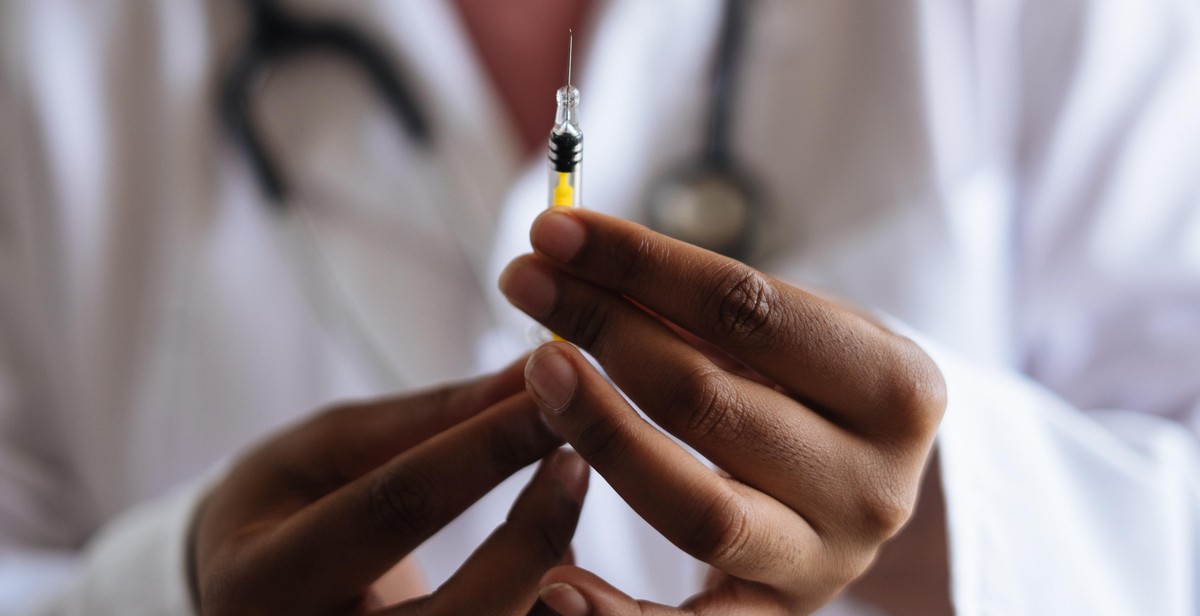How to Advocate for Vaccine Accessibility: Strategies for Ensuring Equal Distribution
Vaccines are crucial tools in the fight against infectious diseases, and the COVID-19 pandemic has highlighted the importance of vaccine accessibility. However, not everyone has equal access to vaccines, and this can have serious consequences for public health. As a content creator and article writer with years of experience, I have seen firsthand the impact that vaccine accessibility can have on communities.
The Importance of Equal Vaccine Distribution
Equal vaccine distribution is essential to ensure that everyone has a fair chance of protecting themselves and their communities against infectious diseases. Unfortunately, many individuals and communities face barriers to accessing vaccines, including lack of transportation, language barriers, and limited access to healthcare facilities. These barriers can lead to unequal vaccine distribution and exacerbate existing health disparities.
Strategies for Advocating for Vaccine Accessibility
As a content creator and article writer, I have found that there are several strategies that individuals and communities can use to advocate for equal vaccine distribution:
- Partner with local organizations to host vaccine clinics in underserved communities
- Advocate for vaccine accessibility in policy and decision-making processes
- Provide education and resources to help individuals navigate the vaccine distribution process
- Encourage vaccination among family and friends
By utilizing these strategies, individuals and communities can work together to ensure that everyone has equal access to vaccines and help protect public health.

Understanding the Importance of Vaccine Accessibility
As someone who has personally experienced the frustration and fear of vaccine inaccessibility, I understand firsthand the importance of ensuring equal distribution of vaccines. When the COVID-19 pandemic hit, I found myself constantly refreshing vaccine appointment websites, only to be met with the same message: “No appointments available.” It wasn’t until weeks later that I was finally able to secure a vaccine appointment, but I couldn’t help but think about all the people who may not have had the same resources and privileges as me to access the vaccine.
The Global Impact of Vaccine Inequality
Vaccine inaccessibility is not just a problem in my local community, but a global issue that has far-reaching consequences. The COVID-19 pandemic has highlighted the vast disparities in vaccine distribution between developed and developing countries. While some countries have secured enough vaccines to vaccinate their entire populations multiple times over, others have barely received enough doses to vaccinate even a fraction of their population.
This unequal distribution not only perpetuates global health inequities, but it also prolongs the pandemic and puts everyone at risk. The longer the virus persists in any part of the world, the greater the chance of new variants emerging that could potentially evade current vaccines. This means that even those who have already been vaccinated may not be fully protected if new variants emerge.
The Importance of Advocating for Vaccine Accessibility
Advocating for vaccine accessibility is not just a matter of fairness and equity, but it is also crucial for public health and safety. No one is safe from the pandemic until everyone is safe, and that means ensuring that vaccines are distributed fairly and efficiently to all populations, regardless of their socio-economic status or geographic location.
As individuals, we can advocate for vaccine accessibility by supporting organizations and initiatives that work towards equitable vaccine distribution, contacting our elected officials to urge them to prioritize vaccine equity, and spreading awareness about the importance of vaccine accessibility. By working together, we can ensure that everyone has access to life-saving vaccines and help bring an end to the pandemic.

Identifying Barriers to Vaccine Accessibility
Vaccines are an essential tool in preventing the spread of infectious diseases. However, not everyone has equal access to them. There are several barriers to vaccine accessibility that must be addressed to ensure that everyone has the opportunity to be vaccinated.
Geographical Barriers
One of the most significant barriers to vaccine accessibility is geography. People who live in rural areas or remote locations may not have access to healthcare facilities that offer vaccines. This can be due to a lack of transportation or a shortage of healthcare providers. Additionally, people who live in areas with high poverty rates may not have the financial resources to travel to healthcare facilities that offer vaccines.
Financial Barriers
Cost can be a significant barrier to vaccine accessibility. Many people may not have health insurance or may not be able to afford the out-of-pocket costs associated with vaccines. Even if vaccines are free, people may not have the financial resources to pay for transportation to healthcare facilities that offer vaccines.
Logistical Barriers
Logistical barriers can also prevent people from accessing vaccines. For example, healthcare facilities may have limited hours or may not offer vaccines on certain days. This can make it difficult for people who work or have other obligations to schedule appointments for vaccinations. Additionally, healthcare facilities may not have enough staff to administer vaccines, which can lead to long wait times and delays in receiving vaccinations.
Lack of Information
A lack of information can also be a barrier to vaccine accessibility. Some people may not know that vaccines are available or may not understand the importance of getting vaccinated. Additionally, misinformation and myths about vaccines can lead to hesitancy or resistance to getting vaccinated.
| Barrier | Description |
|---|---|
| Geographical | People who live in rural areas or remote locations may not have access to healthcare facilities that offer vaccines. |
| Financial | Cost can be a significant barrier to vaccine accessibility, as many people may not have health insurance or may not be able to afford the out-of-pocket costs associated with vaccines. |
| Logistical | Logistical barriers can prevent people from accessing vaccines, such as limited hours or long wait times at healthcare facilities. |
| Lack of Information | Some people may not know that vaccines are available or may not understand the importance of getting vaccinated. |
Identifying and addressing these barriers to vaccine accessibility is essential to ensuring that everyone has equal access to vaccines. By advocating for policies and programs that address these barriers, we can help to ensure that everyone has the opportunity to be vaccinated and protect themselves and their communities from infectious diseases.

Strategies for Advocating for Vaccine Accessibility
As the world continues to grapple with the COVID-19 pandemic, vaccination has emerged as a crucial tool in the fight against the virus. However, vaccine accessibility remains a challenge in many parts of the world, with marginalized communities bearing the brunt of the inequities. Advocating for vaccine accessibility is vital in ensuring that everyone has equal access to the vaccine. Here are some strategies for advocating for vaccine accessibility:
Collaboration with Local Government and Healthcare Providers
Collaborating with local government and healthcare providers is an effective way of advocating for vaccine accessibility. This involves working with local authorities to identify marginalized communities and ensuring that they have access to the vaccine. Healthcare providers can also play a crucial role in advocating for vaccine accessibility by providing information about the vaccine and its benefits, as well as addressing any concerns that individuals may have about the vaccine.
Community Outreach and Education
Community outreach and education can be an effective way of advocating for vaccine accessibility. This involves working with community leaders and organizations to raise awareness about the vaccine and its importance. Community outreach can also involve providing information about vaccine clinics and how individuals can access the vaccine. Education on the vaccine’s safety and efficacy can also help dispel any myths and misconceptions about the vaccine.
Lobbying and Political Advocacy
Lobbying and political advocacy can be an effective way of advocating for vaccine accessibility. This involves lobbying elected officials and policymakers to prioritize vaccine accessibility and ensuring that marginalized communities are not left behind. Political advocacy can also involve advocating for policies that promote vaccine accessibility, such as funding for vaccine clinics and outreach programs.
Donations and Resource Allocation
Donations and resource allocation can also be an effective way of advocating for vaccine accessibility. This involves donating resources to organizations that are working to provide access to the vaccine in marginalized communities. Resource allocation can also involve directing resources towards vaccine clinics and outreach programs in marginalized communities.
Conclusion
Advocating for vaccine accessibility is crucial in ensuring that everyone has equal access to the vaccine. Collaboration with local government and healthcare providers, community outreach and education, lobbying and political advocacy, and donations and resource allocation are all effective strategies for advocating for vaccine accessibility. By working together, we can ensure that everyone has access to the vaccine and help end the COVID-19 pandemic.

Conclusion
Advocating for vaccine accessibility is crucial in ensuring that everyone has equal access to vaccines. It is important to understand the challenges faced by marginalized communities and work towards creating solutions that address these challenges.
Strategies for Ensuring Equal Distribution
- Collaborate with community organizations to identify and address vaccine accessibility barriers.
- Advocate for policies that prioritize equitable distribution of vaccines.
- Provide education and resources to communities to help them navigate the vaccine distribution process.
- Partner with healthcare providers to ensure that vaccines are available in underserved areas.
- Engage in outreach efforts to increase vaccine awareness and encourage vaccination.
By implementing these strategies, we can work towards a future where everyone has equal access to life-saving vaccines. As individuals, we can also play a role in advocating for vaccine accessibility by contacting our elected officials and participating in community efforts to increase vaccine accessibility.
| Remember: | Advocating for vaccine accessibility is not just a matter of fairness, it is a matter of public health. By ensuring that everyone has access to vaccines, we can protect our communities and prevent the spread of disease. |
